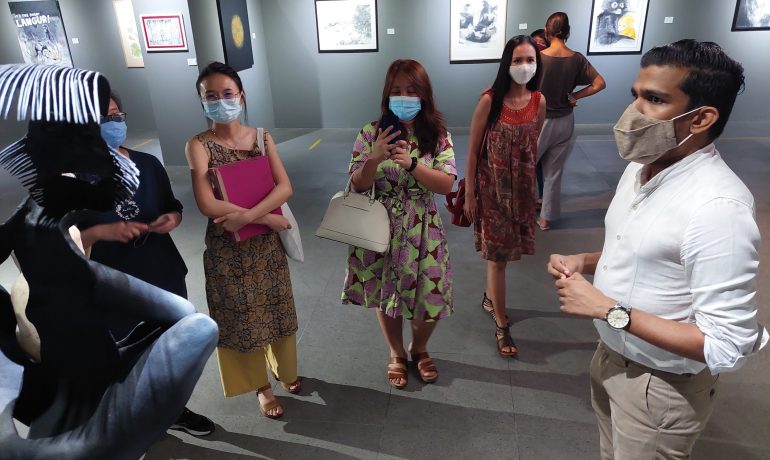Dusky leaf monkeys (langurs) are considered by some as a symbol of Penang’s unique wildlife—just like koalas to Australia—but sadly, not many remain today. According to the head of Langur Project Penang (LPP) Jo Leen Yap, the dusky langur is an endangered species under The International Union for Conservation of Nature (IUCN) Red List of Threatened Species and is at risk of becoming extinct due to residential development, roads, agriculture, hunting, and illegal wildlife pet trade.
So the question is, can humans and wildlife, especially the langurs, co-exist?
The answer to this question comes in the form of a visual arts exhibition, “LangUR Exhibition: Building Bridge Between Our Worlds”, at the Penang State Art Gallery in Dewan Sri Pinang. The exhibition aims to create awareness about the conservation of these endangered primates, and it is not small: it features some 60 artists and 60 artworks of various mediums, from acrylic and watercolour to sculptures, installed across the gallery—melodramatically spotlit. It is designed to guide visitors through langurs’ various stages of life, from birth to the threats they face.
For guest curator Ivan Alexander Francis Gabriel, the exhibition feels personal and ingenuous. “My connection with the langurs started many years ago, even before I knew what they were. I was walking to my classroom where I worked as a teacher when I saw a langur in the corridor. Its back was facing me, and at that point, I didn’t know what it was doing. As I walked closer to it, I realised it was feeding its anak emas (golden child),” says Gabriel.

